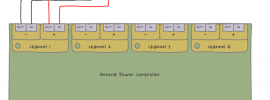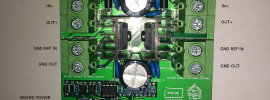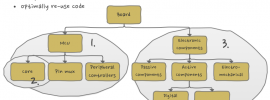The green4 stm32 cortex m3 microprocessor we selected is - according to today's standards - a rather small microprocessor in Flash (128KB) and RAM (8KB). why an interpreter The Green4 device is running control software on top of FreeRTOS, with a … [Continue reading]
Green4 charge controller: wiring diagrams part 2
Wiring diagram: wind turbine to dump load In contrast to solar panels, a wind turbine can't be disconnected in case it generates too much power. We need to brake it by attaching a load to it. However, wind power can't always flow through the charge … [Continue reading]
Green4 charge controller: wiring diagrams part 1

Introduction Instead of endlessly listing requirements and specifications, we prefer to demonstrate the architecture of our Green4 charge controller by means of wiring diagrams and other illustrations. The Green4 is designed to be a versatile … [Continue reading]
Open source implementations of malloc
On (very) small embedded systems without a full OS (e.g. because there is only a scheduler), one can (and should) usually live without dynamic memory allocation. But sometimes, it is really needed or it is just more convenient. It is possible to … [Continue reading]
DC motor control with the mosfet switch board
Although, there is no such thing as a general purpose mosfet switch board because of the wide variations in application specific load (resistive, capacitive, inductive or mixed) characteristics, we were able to investigate and demonstrate DC motor … [Continue reading]
Object-orientation in C – Part 4
We continue to build on the example in Part 3, but we go another step further. Even more abstraction and information hiding can be achieved by partially mimicking (part of) the COM manner of programming: strictly talking with interfaces. This style … [Continue reading]
Current limiting with PWM
For particular applications, such as our energy harvester or at least the battery charger part of it, the ability to control the current is an essential property. We must emphasize that the presented method will limit the average current; the … [Continue reading]
Coming Soon

Finally, we are almost there. Our first product - a joint development result of cooperation between IACS and RTOS.BE - is about to be commercialized. The Energy2Switch is a DC switch board with 2 channels rated up to 50V and 40A. Continuous power is … [Continue reading]
Object-orientation in C — Part 3
For non-trivial class hierarchies the method proposed in Part2 is probably not optimal. The main reason is that there is only one C struct which is used by base and subclasses. Consequently, the hierarchical tree is only implicitly contained in the … [Continue reading]

Recent Comments